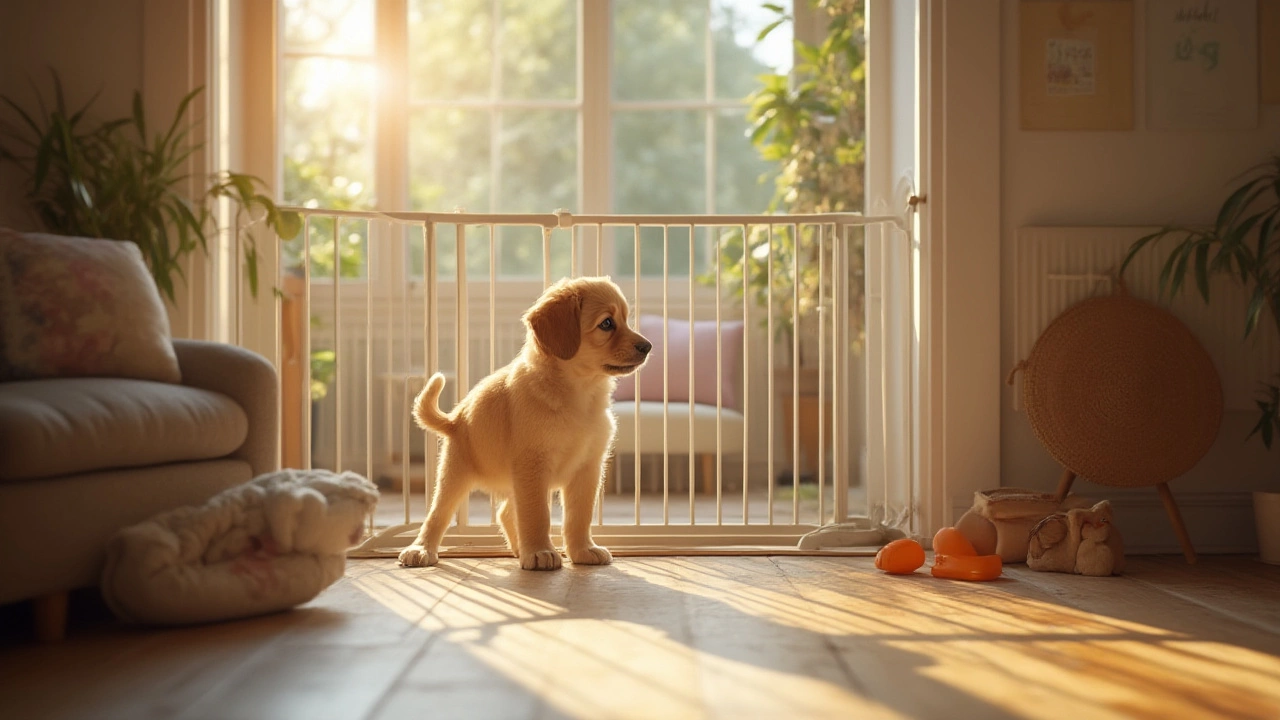Puppy Roam House: Safe Indoor Play & Training Tips
Got a new pup and the whole house feels like a playground? Letting a puppy explore can be great for confidence, but it can also turn your living room into a disaster zone. The good news? You can give your fluffy friend freedom without losing your favorite shoes or couch.
Puppy‑Proof Your Home
First step: scan every room like a detective. Anything you can chew, swallow, or knock over should be out of reach. Swap out cheap cords for PVC covers, stash chemicals in high cabinets, and use baby gates to block off stairs or rooms you’re not ready to share.
Soft surfaces are a puppy’s best friend. Lay down washable rugs or interlocking foam tiles in high‑traffic zones. They protect your floor and give your pup a comfy spot to tumble. When you’re buying toys, pick ones that are sturdy, non‑toxic, and sized for a growing mouth.
Don’t forget the garden or balcony. Even a tiny balcony can become a death trap if the railings are too low. Keep gates locked, and consider a playpen that fits snugly against the railing.
Teaching Boundaries and Good Habits
Now that the house is safe, teach the puppy where they can and cannot go. Start with a designated “puppy area” – maybe a corner with a crate, bed, and a basket of toys. Whenever the pup wanders out, gently guide them back and reward calm behavior with a treat or praise.
Consistency is king. Use the same cue every time you want the puppy to stay out of a room – for example, “off” or “no‑go.” Pair the cue with a positive reward when the pup obeys, and ignore the unwanted behavior. Over time, the pup learns that staying in the right spots earns goodies.
Chewing is natural, especially when they’re teething. Provide chew toys in every room you allow roaming. Rotate the toys every few days to keep things interesting. If you catch them chewing on a shoe, swap it for a toy right away – the quicker you replace the item, the faster they make the connection.
Potty training fits into the roaming routine too. Set a schedule and take the puppy out after meals, naps, and play sessions. If you notice them sniffing the floor in a certain spot, gently guide them to the outside or a designated indoor potty pad. Praise big time when they go in the right place.
Finally, give the pup plenty of mental stimulation. Short training games, scent work with hidden treats, or a quick tug‑of‑war session break up the monotony of just wandering. A tired brain means a calmer house.
Letting your puppy roam the house doesn’t have to be a nightmare. With a few simple safety tweaks, clear boundaries, and rewarding routines, both you and your pup can enjoy the freedom. Your living room stays intact, the pup stays happy, and you get to relax knowing that the chaos is under control.

When to Let Your Puppy Roam the House: Training, Timing, and Safety Secrets
Wondering when to let your puppy roam the house? Find out how to time it right, prep your home, and avoid common mistakes for a happy, well-behaved pup.
View more